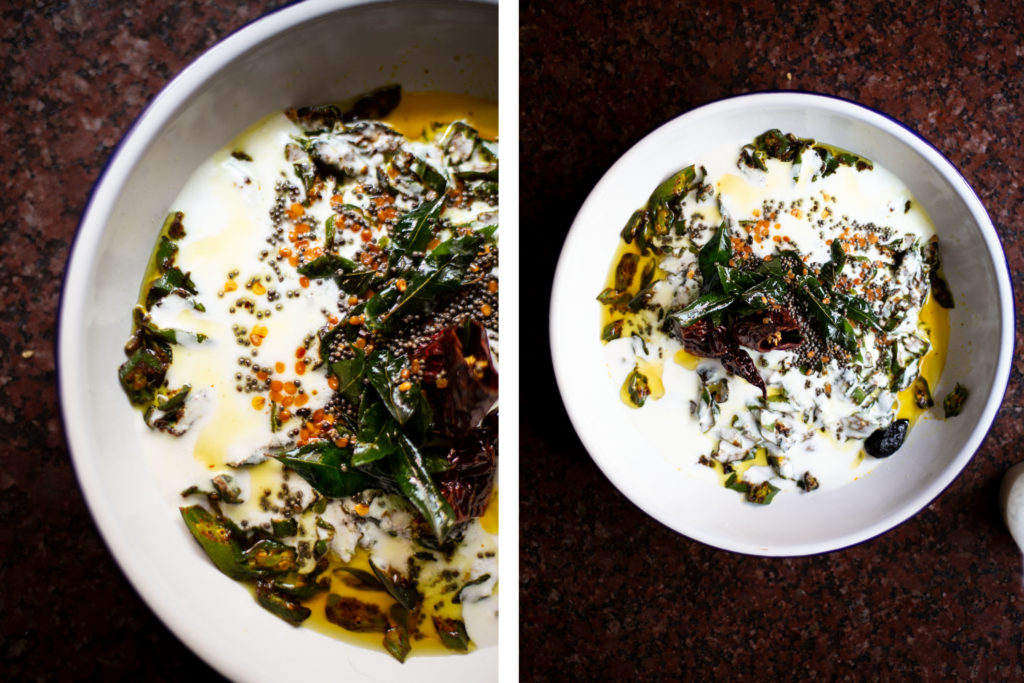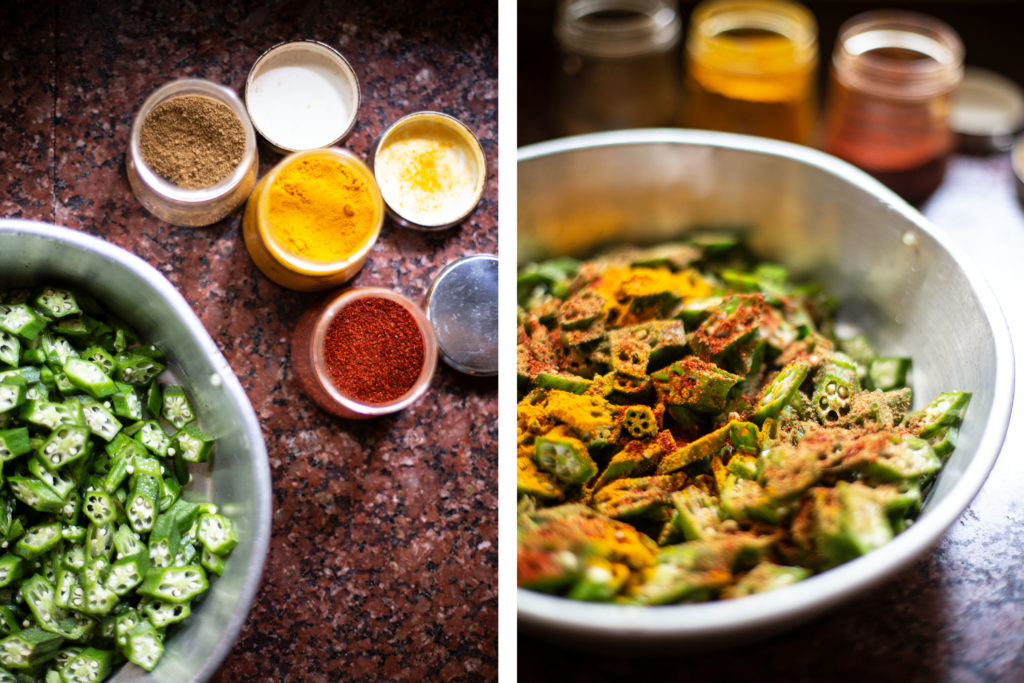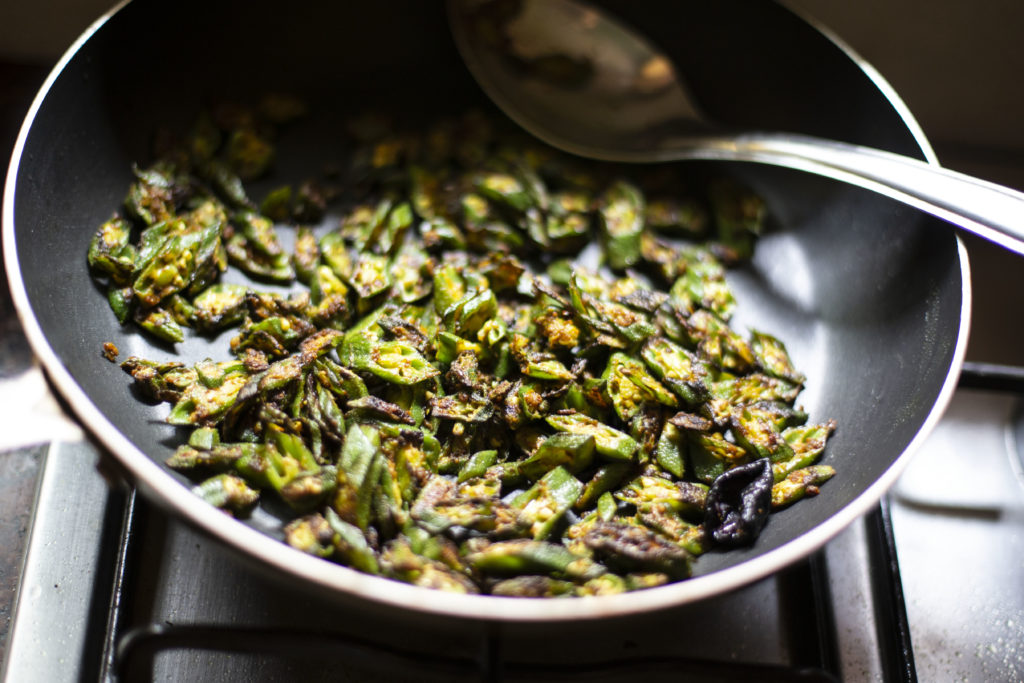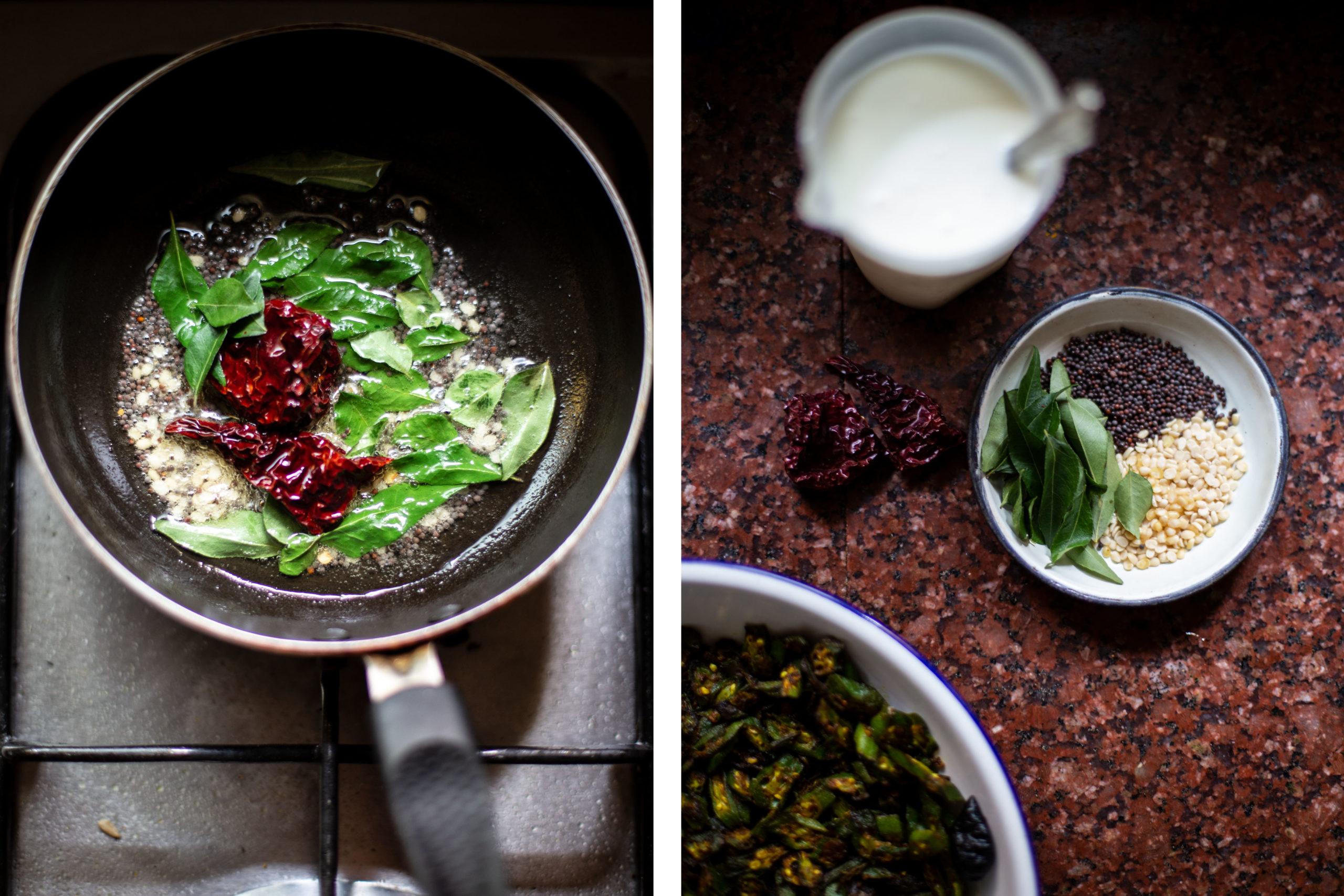
Bhindi in Hindi or bhendi in Konkani is okra. We also call it lady finger but I really don’t like that name so I call it one of the first three I mentioned. Dahi is the word for yogurt or curds, as we say with ease. Tadka means tempering (of spices) and the versions of it are as myriad as the diaspora.
We have been making dahi at home for sometime now (maybe 2 months?) and it has been a good lesson in fermentation and reducing plastic waste (the onus of which should NOT be put on a consumer). It’s simple to make. Most of the work is forgetting you did it.
You can find many recipes online. Some will tell you to measure the temperature of the milk, others will remind you how long is too long to boil it. The oh-no-I-looked-away-for-1-second-and-now-have-to-clean-the-stove unit of measurement is something very familiar to many Indian children, who were tasked with boiling milk for tea. The best recipe for dahi is largely instinctual. You start with a culture (which is a little bit of dahi from someone or from the last bag of dahi you will ever buy). You boil milk, you let it cool to tepid/ lukewarm. You add the culture to the milk and then let it sit in a warm spot in your kitchen until it takes over the milk and sets. It might not set perfectly the first time but keep practicing and it will eventually set to a place you can be proud of.
I first saw this recipe with brinjal on my instagram friend’s feed. Reshmi goes by @life_in_a_curry and lives in the US. I can’t remember how I started following her but now that I’m invested in it, I enjoy looking at her daily posts and finding inspiration in some of the dishes she makes. She grew up on the Andaman Islands, which is a union territory in India. I don’t know a single person from there so following her teaches me non-food and food facts I would not have learnt otherwise.
Reshmi gave a brief gist of how she made and since we had some brinjal at home, I cut into rounds and was too lazy to go any further. My mother saw the post and took it upon herself to make the dish herself. It was every bit as advertised and more.
This dish is made with eggplant in quite a few Indian states and depending on the spices that are commonly used there, it could taste completely different. It’s made in Kashmir, Orissa and even in India’s neighbouring countries – Afghanistan and Pakistan. Here, we made it with bhindi. I asked Reshmi where she learnt how to make this and she said that it might have been a friend’s mother (but couldn’t remember the details).
Bhendi, fried and covered with dahi + tadka on top

Notes
If you want to start making curds/dahi/yogurt at home, this website has some well-tested and reliable recipes. I can vouch for their work. Photos accompany you through the process and everything is explained in detail as well. Take some time to read through before you begin.
You should be able to find all these ingredients in an Asian or Indian store, if you’re in the US.
Ingredients
- 1/4 kg or 1/2 lb okra, sliced 1/4 inch thick diagonally or into 1/2 inch rounds
- 1 tbsp ground coriander seeds
- 1/2 tsp ground turmeric
- 1/4 tsp Kashmiri chilli powder (can substitute paprika)
- 1 tbsp + 1 tbsp coconut oil, divided
- 2 pieces of dried kokum (if you’re in Goa) or 1 tsp lemon juice
- Rock salt, to taste
- 1 cup full-fat yogurt, whisked till smooth and of a pourable consistency
- 1/2 tbsp brown mustard seeds
- 1/2 tbsp urad dal
- 2 stalks curry leaves (about 15-20 leaves)
- 1 whole Kashmiri chilli, cut in half
Put the bhendi in a bowl and cover it with the spices – coriander, turmeric and chilli powder. Mix it well, with your hands making sure the spices cover every surface of this majestic seed pod.
Heat a large frying pan on medium-high heat and add coconut oil to it. Your coconut oil should have the fragrance of coconuts. Add the okra to the pan once it starts to shimmer and let it cook, letting it be and occasionally stirring it so it gets nice and brown on its fuzzy yet resilient exterior.
Add the kokum or lemon juice to the pan and stir well. The acid helps change the pH, reducing the slime that releases from the okra seeds. Cook the okra for about 7 minutes, but more if you like it crispier. Add salt to taste at the end of cooking and stir it to coat the okra.
Move the cooked okra to a shallow serving bowl, gathering every last bit. Pour the yogurt over it the vegetable and stir it all together.
In the same frying pan, heat another tbsp. of coconut oil on medium-high heat. Add the mustard seeds, urad dal and Kashmiri chilli. Stir constantly. Once the urad dal starts to change colour slightly, add the curry leaves. Keep stirring until the urad dal starts to turn golden, the mustard seeds begin to pop and the curry leave crisp up. Immediately take it off the heat and pour this mixture (called tadka) over the curds. This final step happens very fast. If it ends up burning, start over.
Mix everything together. Taste for salt and add more if needed. Serve warm or at room temperature.


